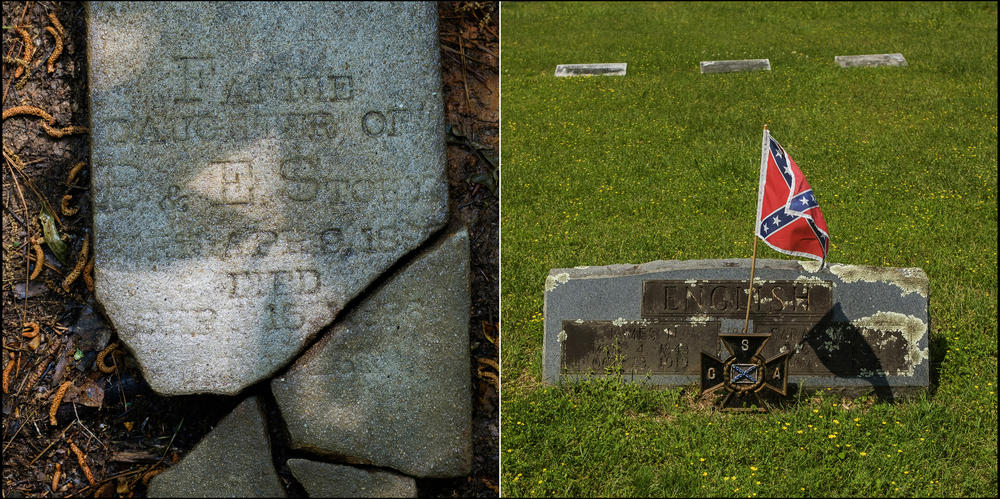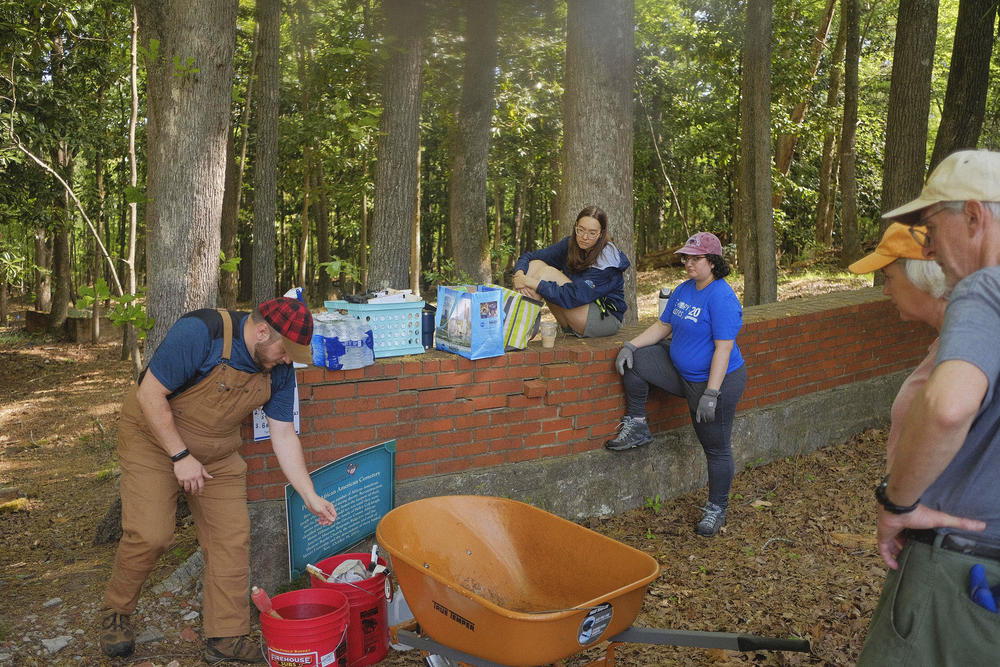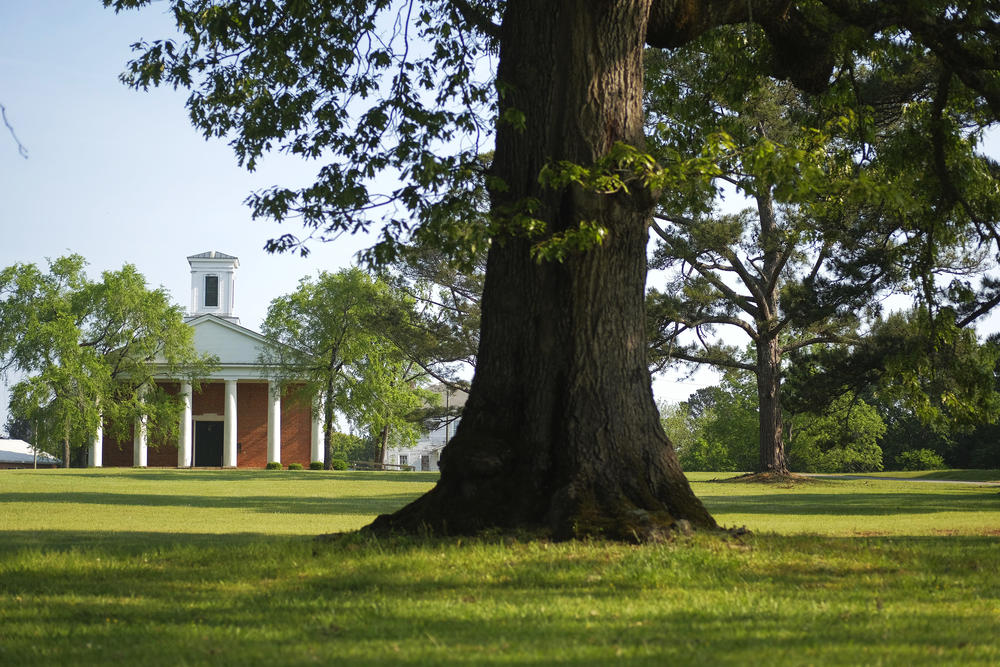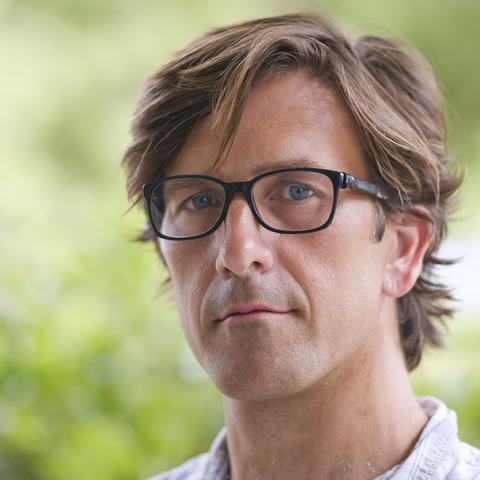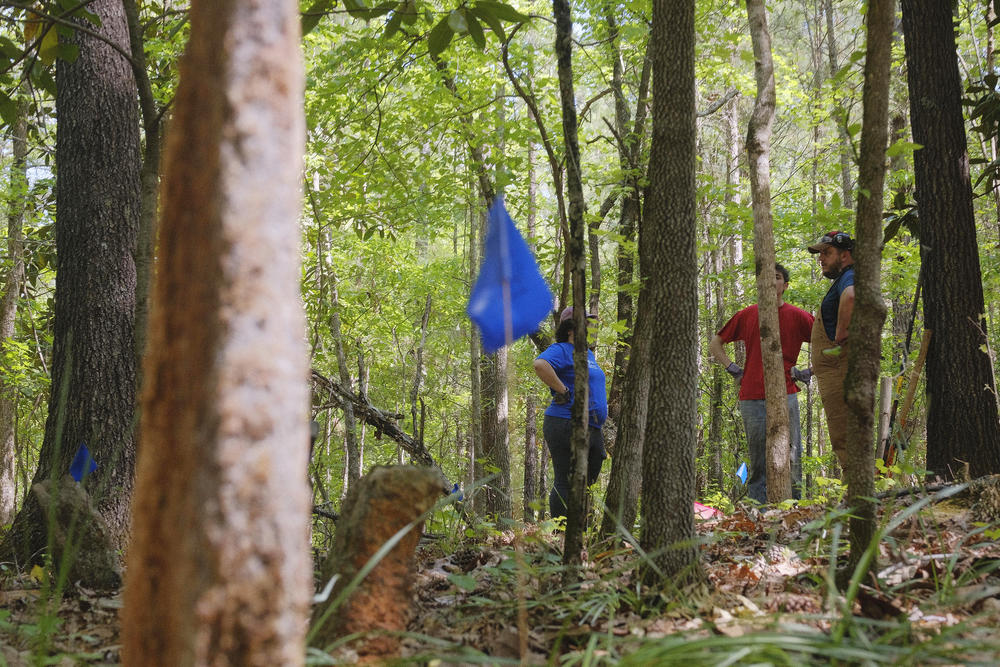
Caption
A blue pin flag, foreground, marks a spot where ground penetrating radar indicated a grave in the woods of the Penfield Cemetery. Such remote detection is only possible after volunteers move trees and undergrowth out of the way.
Credit: Grant Blankenship/GPB News

